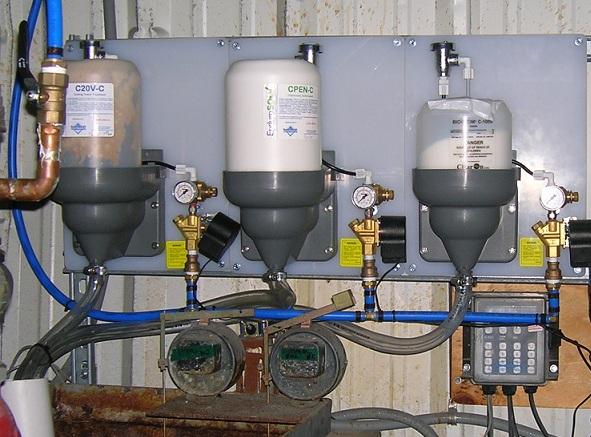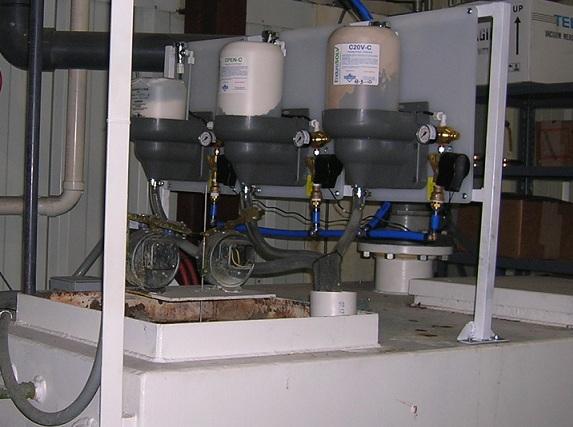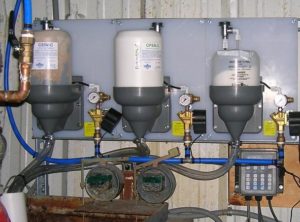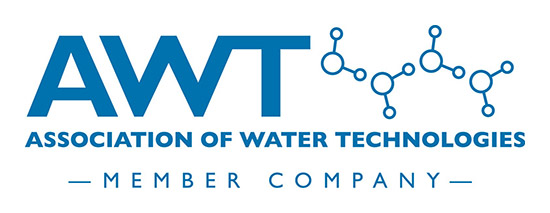
This company adopted an environmentally friendly water treatment system for its Midwest facility’s cooling towers to support sustainability goals. In 2010, they transitioned from liquid chemicals to a blended solid concentrate solution, reducing chemical storage needs by 75% and improving safety by eliminating large chemical drums. The new system maintained cooling tower efficiency, delivered a 15% cost reduction, and enhanced workspace cleanliness. This sustainable approach not only met environmental targets but also set a valuable example for other industrial facilities aiming for eco-friendly operations without sacrificing performance.
Overview
An aerospace company headquartered in Windsor, Connecticut, operates a manufacturing facility in the Midwest that relies on four cooling towers to support its production processes. Traditionally, the facility used liquid chemical treatments for its cooling towers, but the company’s leadership had increasingly prioritized sustainability and environmental responsibility. As part of their broader environmental goals, the management team sought to transition to a more sustainable and environmentally friendly water treatment solution for their cooling towers.
Objectives
The primary objectives for the new water treatment program were:
- Maintain or Improve System Cleanliness: Ensure that the cooling towers continued to operate efficiently, with the same or better levels of cleanliness and system protection.
- Eliminate Chemical Drum Handling and Disposal: Reduce the risks and operational challenges associated with handling and disposing of large chemical drums.
- Optimize Inventory and Storage: Minimize the space and management requirements for storing treatment chemicals.
- Reduce Costs and Environmental Impact: Achieve cost savings while lowering the environmental footprint associated with the water treatment process.
Implementation
In July 2010, the facility transitioned to a new water treatment program that utilized blended solid concentrate products. The new program included a scale and corrosion inhibitor, a dispersant, and a registered biocide, all designed to meet the specific needs of the facility’s cooling towers.


This transition eliminated the use of liquid chemicals, significantly improving the cleanliness and organization of the work area around the cooling towers. The space required for chemical storage was reduced by 75%, and the heaviest container that operators now need to handle is a 44-pound case of blended solid concentrate, packaged in recyclable plastic bottles.
Results
The new water treatment program not only met the facility’s sustainability and operational goals but also delivered additional benefits:
- Cost-Effectiveness: The new solution was cost-competitive with the previous liquid chemical system. When factoring in hidden costs such as shipping and drum disposal, the facility realized an approximate 15% cost savings compared to the previous solution.
- Operational Efficiency: The facility maintained or improved system cleanliness and efficiency, ensuring the cooling towers operated effectively with reduced environmental impact.
- Enhanced Safety and Space Utilization: The elimination of large chemical drums improved safety for operators and freed up significant storage space within the facility.
Conclusion
This case study demonstrates the successful implementation of a sustainable water treatment solution in an aerospace manufacturing facility. By transitioning to a blended solid concentrate treatment program, the company was able to align its operational practices with its environmental goals, achieving significant cost savings, improving safety, and reducing its overall environmental impact. This approach serves as a model for other industrial facilities looking to enhance sustainability without compromising performance or efficiency.

